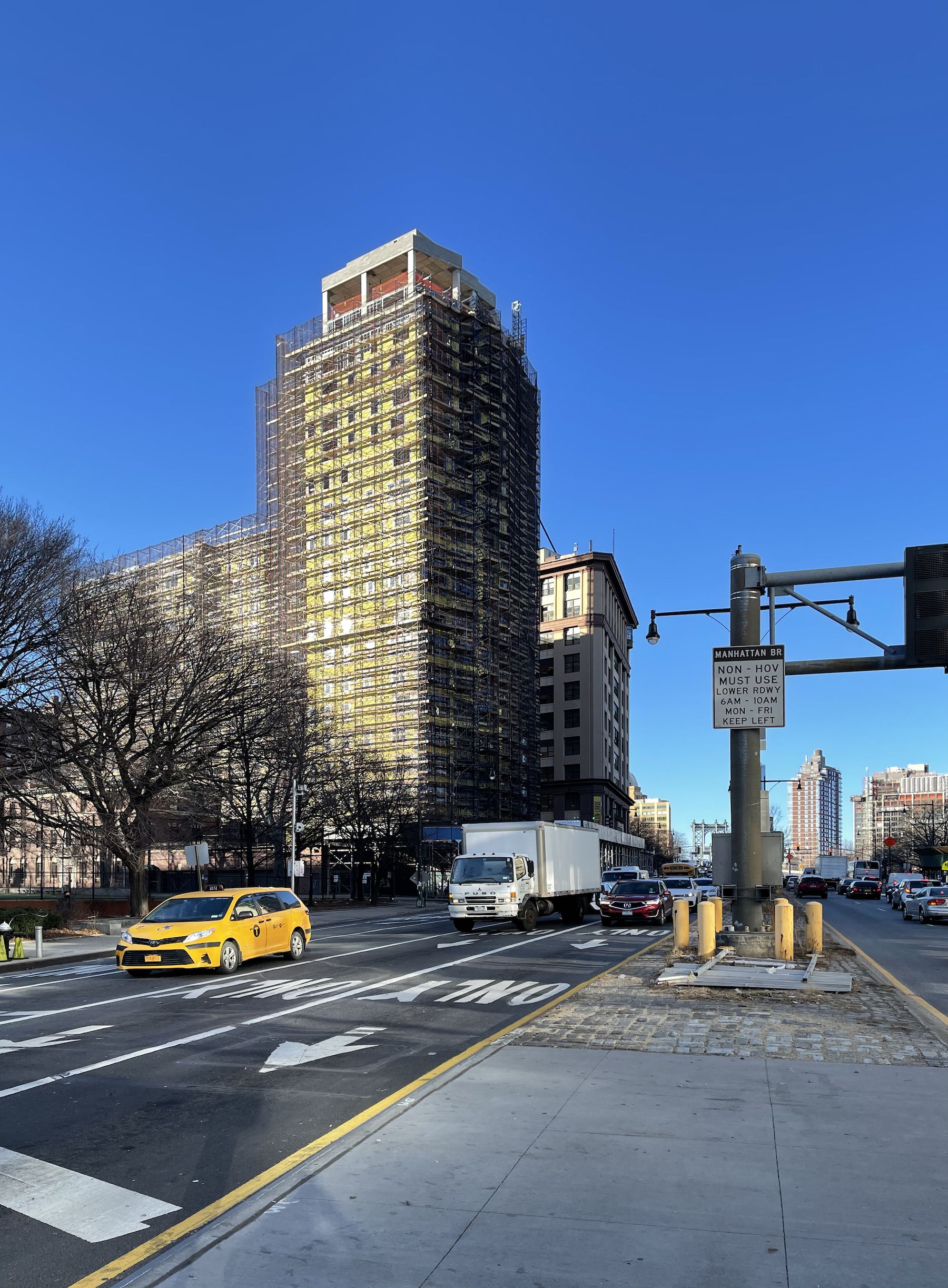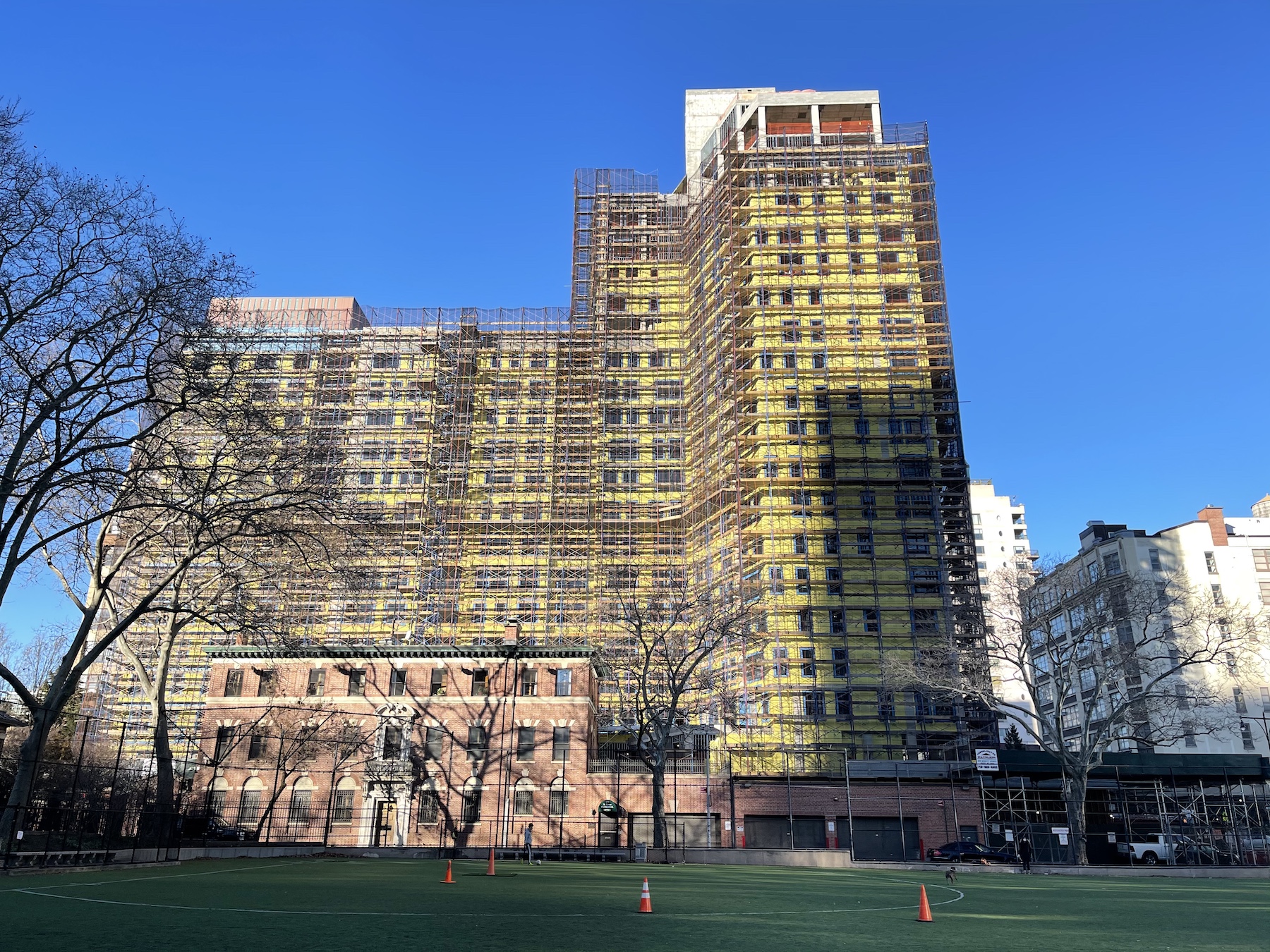Among its many legendary attributes, New York City is known for its rabid sports fans, foldable pizza slices, and wealth of arts and culture. But it’s the city’s iconic architecture that perhaps best defines its footprint I n the northeast. When Delshah Capital and OTL Enterprises selected a team to design and build a 20-story high rise in the bustling borough of Brooklyn, it was literally Go Big or Go Home.
The Challenge
The 211-foot stunner situated at 22 Chapel Street presented an exciting opportunity to build a towering structure to compliment the revitalization of downtown Brooklyn. Designed by CetraRuddy Architecture, the property is located at the south end of the Manhattan Bridge, presenting it with a high amount of exposure to admirers near and far.
Housed within its 167,000 square feet will be 180 residential units, retail space, and a community facility. Since the building needs to withstand the extremes of New York weather – including punishing rain and snow – a superior weather barrier system was a must. Additionally, the building exterior required a barrier material that would work well with metal panels and provide high levels of energy efficiency. That’s when two Georgia-Pacific innovative water-resistive barrier/air barrier (WRB/AB) solutions answered the call: DensElement® Barrier System and DensDefy™ Accessories.
Not Just a Square Box
The building’s southern-facing façade and tower were uniquely designed to allow for exceptional views and to flood the interior with natural light. “It’s not just a square box,” said Darren Glisan, senior project manager at Titanium Construction Services, the general contracting firm hired for the job. “The façade elevation is highly complex in that the slab edges do not align with one another at the east end of the building. That was a fun challenge,” Glisan continued.

Another notable part of the job was that DensElement Barrier System and DensDefy Accessories weren’t initially specified. The façade design originally called for porcelain tile and sheathing that was specifically designed for that material. However, the porcelain was later shelved for metal panels since they were more cost-efficient and easier to work with.
That’s why Willis Ting, project manager and senior associate at CetraRuddy Architecture, turned to DensElement Barrier System, which integrates gypsum sheathing with a water-resistive barrier and an air barrier, along with DensDefy Accessories to seal the building envelope. According to Ting, “The DensElement Barrier System (and DensDefy Accessories work) better with certain products – and metal panels are one of them. And, considering all the seams that have to be protected from the weather, we needed to choose the best (system) for the job.”
Thornton Tomasetti, the façade consultants and structural engineers, still need proof before moving forward. “Thornton Tomasetti are serious engineers. They know their stuff and they don’t compromise,” remarked Glisan. The team conducted a WUFI analysis, the industry’s most advanced analytical simulation of hygrothermic (the combination of heat and moisture) conditions in a building envelope. The results spoke for themselves, demonstrating that DensElement Barrier System with DensDefy Accessories was indeed the best water-resistive/air barrier for the job. Ting noted convincingly, “It’s a one-stop shop. (DensElement and DensDefy make) the design team feel secure that we’re handing off the right products to the construction team.”
Exceeding Sky-High Expectations
Once the build began, DensElement Barrier System and DensDefy Accessories were put to the true test. “You need to make sure the whole building is sealed the right way. By selecting the right (products), we know the building will not leak, is fully airtight, and the insulation will be protected,” said Ting.
Among the advantages of DensDefy Accessories are the simplicity and efficiency of installation, even in wet weather. DensDefy™ Liquid Flashing waterproofing, adhesive, and detailing compound seals rough openings, penetrations, joints, and seams. DensDefy™ Transition Membrane is a self-adhered, butyl-based membrane used on drift or control joints, vertical expansion joints, and gaps greater than 1” to ensure envelope continuity. “Together, they perform as though they’re a waterproofing membrane, and that simplicity is their greatest benefit,” said Glisan of DensDefy Accessories’ performance on the job.
While “time is money” is a figure of speech for some, for the team on a build, it’s what drives their business. Glisan went on to discuss how waterproofing materials have only gotten more complex, specifically referring to liquid-applied membranes, which often require installers to double-back to ensure the material specifications are being followed.
Another challenge when roll-on-specific applications are used is the material driving onto finished elements of the building, like windows and the floors below. DensElement Barrier System removed any worry about spending extra time on quality control.
The heightened level of durability and efficiency delivered by the Georgia-Pacific products was echoed by everyone contributing to the project. After using DensElement Barrier System and DensDefy Accessories for the first time, John Vennera, field supervisor at PG New York, remarked, “we’re closing the building up way quicker than normal, which allows the other trades to move along. And, obviously, any client would appreciate that.”
Mike Whitmore, the purchasing director at PG New York, not only said that the speed of the installation process cut labor costs, but also the two-in-one combination of sheathing and weather resistance for a set price from one company made purchasing faster and easier. “There were even (fewer) bills for scaffolding because the guys spent less time on it,” said Whitmore. “Combining the waterproofing and sheathing is good because when it comes to warranty time, you have one single source.”
DensElement Barrier System and DensDefy Accessories can be installed without damage in rain and even in New York’s winter weather. This helped streamline the installation and overall production schedule by allowing the window installers to move in quicker and, in turn, close the building faster so interior work could stay on schedule.
A product is only as good as the company standing behind it. From the development of innovative building materials to the distribution network making sure they arrive on time, Georgia-Pacific is proud to be part of Brooklyn’s newest landmark building. It’s been said that everyone in New York has a story; thanks to those who put their trust in us at 22 Chapel Street, we do, too. 20 stories, to be exact.
Related Stories
| Aug 11, 2010
New Ways to Improve Water Efficiency
In the U.S. and most of the industrialized world, building occupants take for granted the simple convenience of filling a glass with clean, drinkable water at the kitchen sink. Yet worldwide, nearly a billion people globally have no access to safe drinking water, according to the Natural Resources Defense Council.
| Aug 11, 2010
Healthcare construction weathers the recession
Healthcare construction spending grew at a compound rate of more than 10% for seven years through mid-2008, but has stalled since then. The stall, however, still represents better growth than almost any other construction market during the recession, which deepened as a result of the fall 2008 credit freeze.
| Aug 11, 2010
Embassy's dual façades add security and beauty
The British government's new 46,285-sf embassy building in Warsaw, Poland's diplomatic quarter houses the ambassador's offices, the consulate, and visa services on three floors. The $20 million Modernist design by London-based Tony Fretton Architects features a double façade—an inner concrete super structure and an outer curtain wall.
| Aug 11, 2010
Cost of HVAC equipment to remain flat in 2009, says Turner
While some manufacturers have announced slight increases in facilities equipment pricing for 2009, the average cost of equipment is expected to remain flat in 2009, according to the 2009 Turner Logistics Equipment Cost Index. However, equipment pricing could face increased pressure if there is a further decline in market demand.
| Aug 11, 2010
Citizenship building in Texas targets LEED Silver
The Department of Homeland Security's new U.S. Citizenship and Immigration Services facility in Irving, Texas, was designed by 4240 Architecture and developed by JDL Castle Corporation. The focal point of the two-story, 56,000-sf building is the double-height, glass-walled Ceremony Room where new citizens take the oath.
| Aug 11, 2010
Toronto mandates green roofs
The city of Toronto late last month passed a new green roof by-law that consists of a green roof construction standard and a mandatory requirement for green roofs on all classes of new buildings. The by-law requires up to 50% green roof coverage on multi-unit residential dwellings over six stories, schools, nonprofit housing, and commercial and industrial buildings.
| Aug 11, 2010
Modest recession for education construction
Construction spending for education expanded modestly but steadily through March, while at the same time growth for other institutional construction had stalled earlier in 2009. Education spending is now at or near the peak for this building cycle. The value of education starts is off 9% year-to-date compared to 2008.
| Aug 11, 2010
'Feebate' program to reward green buildings in Portland, Ore.
Officials in Portland, Ore., have proposed a green building incentive program that would be the first of its kind in the U.S. Under the program, new commercial buildings, 20,000 sf or larger, that meet Oregon's state building code would be assessed a fee by the city of up to $3.46/sf. The fee would be waived for buildings that achieve LEED Silver certification from the U.






